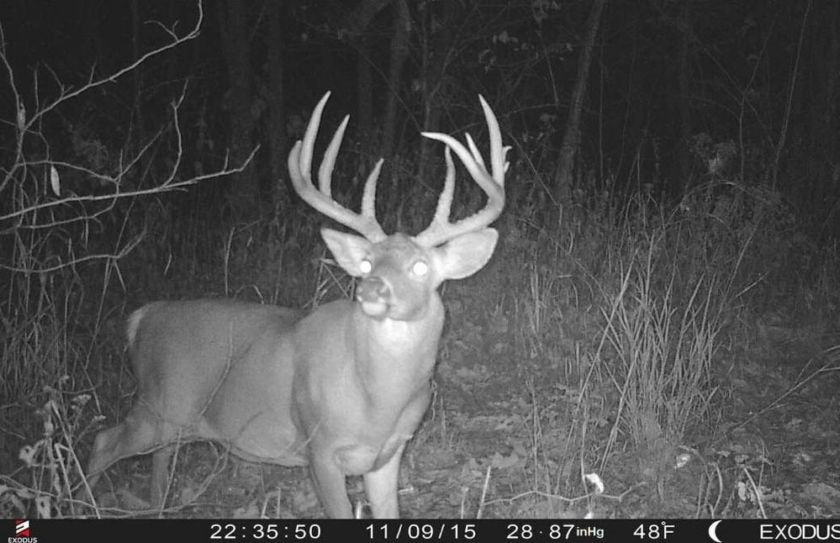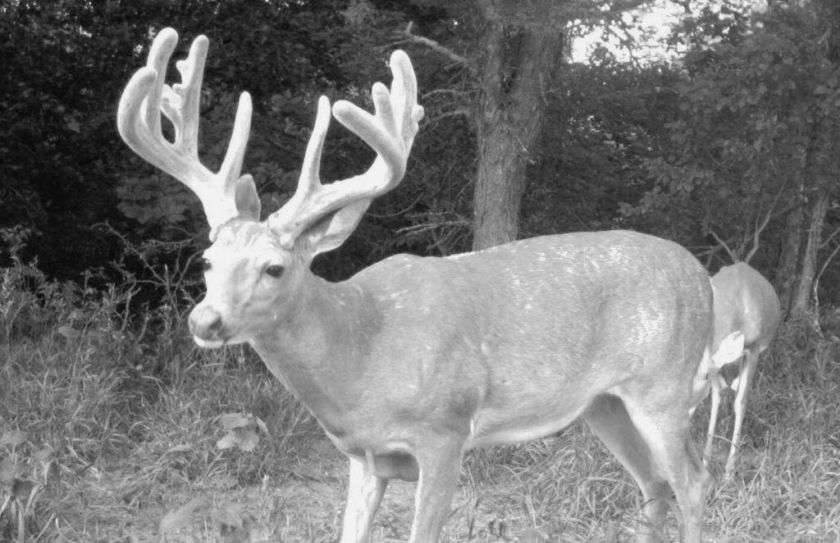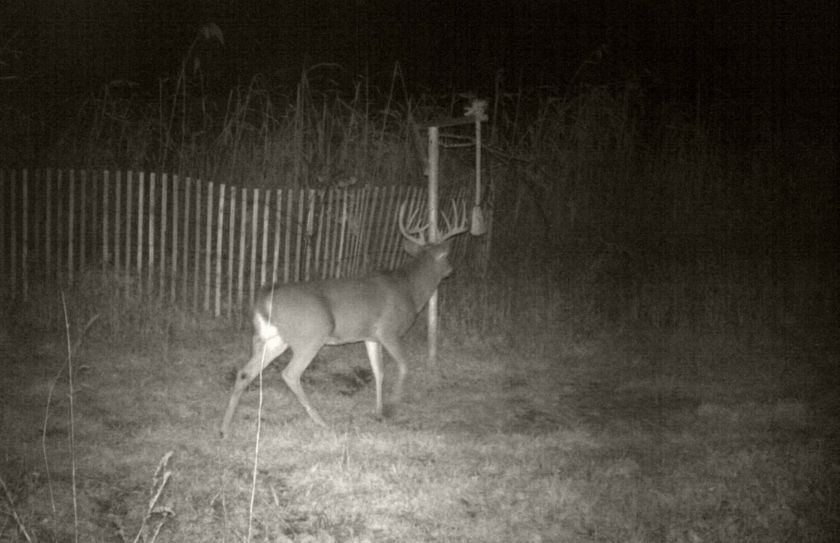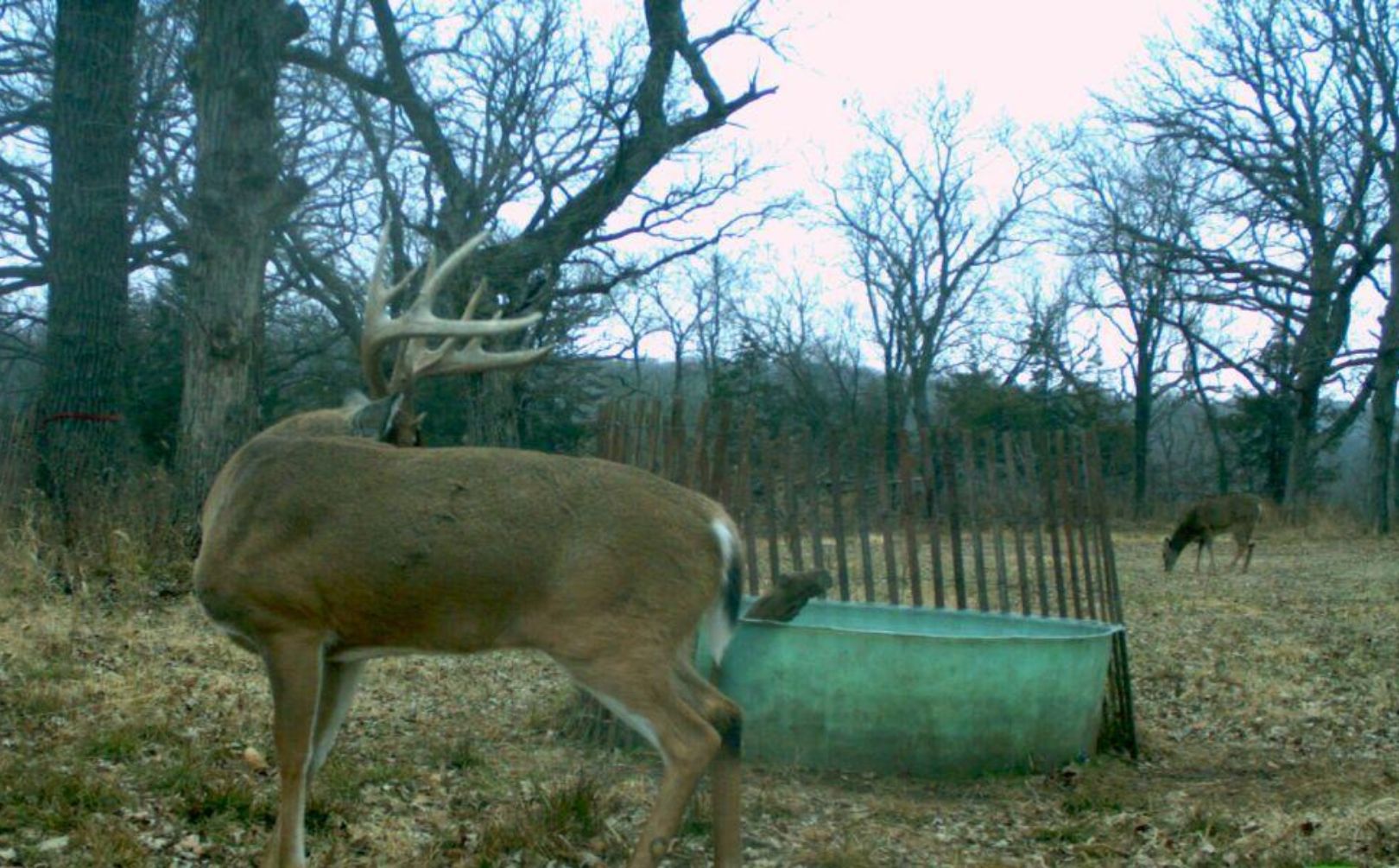
Are you lacking daytime buck travel on the land that you hunt? Here are a few "Nocturnal Busting" habitat and hunting tips to make sure that you can control a larger % of the time that bucks spend on your land during the daytime hours, versus the rest of the neighborhood.

*Don't forget to check out my trilogy of Advanced Whitetail Strategy books, including my latest book,"Mature Buck Success by Design".
How you hunt your land has a great deal to do with how attractive your land is to an old monarch during the day, but there are several cool habitat activities that you can take advantage of for creating daytime buck travel as well! Food, water, scrapes, rubs and daytime mature buck bedding opportunity are all habitat improvements that can be completed with the ultimate goal of controlling buck movements, in an effort for attaining your herd, hunting, and habitat goals.
Long Lines of Food
There are many reasons that a mature buck may want to travel to a neighboring parcel of land:
1. Agricultural fields not only contain a large supply of decent food offerings, but often contain prime time social activities combined with safe bedding opportunity, all night long.
2. For several years we watched and took advantage of deer moving from the bedding areas on our land, to our food sources, and then finally across the fence to access a water source behind the neighbor's house after dark.
3. "Does". Doe family groups and bucks rarely bed together unless forced to do so. With small parcels it is possible to create situations where you can control a very thick and secure portion of habitat that is more conducive to the reclusive nature of a wise old buck. If your land is more attractive to bucks than does (this is a bad thing!), you can bet that bucks will eventually leave to search for does.
Creating daytime buck travel often boils down to forcing a buck to pay attention to a variety of habitat improvements on your own land. The opposite of this of course, is a mature, open stand of hardwoods. No cover, no rub or scraping opportunity and singular, unrelated food sources can be passed by fairly quickly by a cruising buck. This is why long lines of food sources that parallel, but still stay hidden, within your borders you can set the stage for a controlling a large % of daytime buck movement! Long, thin lines of food that matches the flow of your habitat, forces a buck to not only wander and seek for does, but to travel great lengths to do so. If a mature buck leaves his bed within your land while exiting towards a neighboring food source he may pass quickly by a 1 acre square food plot, even if broken up with grasses and screenings. However, if that same food plot space is spread out to parallel your borders in a snake-like natural flow of the land, a buck has to make a choice: To turn Right, or Left. How long can 1 acre of food be stretched out to? Consider that a plot that is 50' wide by 900' long is just a shade over 1 acre. That's 300 yards that not only a buck has to search through, feed and spend a considerable amount of time to travel through, but 300 yards of potential stand locations for a variety of wind directions! There are also many additions that you can make to a food source line of movement in an effort to even further control daytime buck travels on your land.
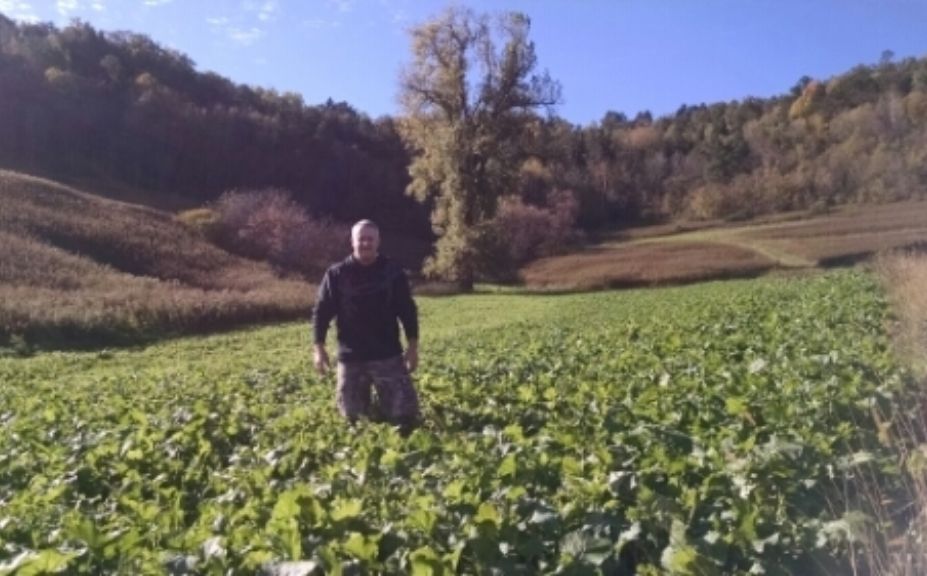
*Long, snaking food plots can be an incredible addition to your land if the habitat allows for it! To read all about the strategy, check out, "Food Plot Designs: Thin is In".
Mock Scrapes for Daytime Buck Travel
Would you believe that I have seen over 500 mock scrapes on 1 parcel alone? The idea was that by having 100s of scrapes not only would many bucks be highly attracted to the land, but that they would rarely have time to leave the land. Folks, this wasn't the case on that Northern WI chunk of land, and in my experience this is not the case anywhere else either. Whether you are placing 20 waterholes or mineral licks on 40 acres, or even 100 scrapes, you eventually reach a point of passing the balance of value for the improvement. Even 10 waterholes on 40 acres is too many, and the level of priority that deer will place on each waterhole is greatly reduced through over-saturation of the improvement. That is the same thing that happens with mineral licks, it is the same thing that happens with apple trees or oaks, and it is the same thing that happens with mock scrapes. "More" is not better, in just about any form of habitat improvement.
Using the above example of the long narrow food plot, paralleling your parcel border, you can further increase the minutes or hours of daytime buck movement by strategically placing mock scrapes near stand locations. Quality definitely rules over quantity and by keeping the number of mock scrapes to a minimum the value remains high enough to offer a signficant level of attraction to the local buck herd. Imagine that a buck exits his bedding area, travels to a long narrow food plot, and then has 4-5 scrape locations stretched out over 300 yards to check out; all while traveling parallel to your borders, and not perpendicular to your borders. Your stand locations can be used to take advantage of 1-2 clusters of mock scrapes along the way, as well as the precise deer movement travels offered by the long, thin food plot.
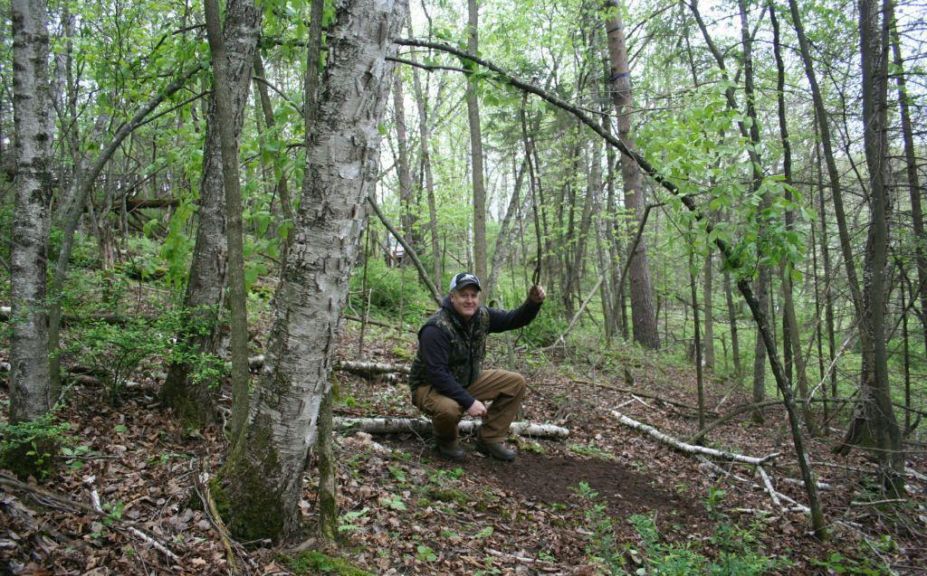
*For getting the most out of your mock scraping efforts, check out "Mock Scrape Strategies: Creating Buck Movement".
Waterholes For Controlling Daylight Buck Travel
Having mock scrapes on your land won't attract more bucks to your land, and neither will waterholes, with the exception of the most drought like conditions. However, what mock scrapes and waterholes will do (quite well!) is to define and control deer movement. This is why you should rarely, if ever, place a waterhole in a location that can't be shot at by bow. From what I have experienced, waterholes have a far greater ability to attract and control daytime buck travels on dry parcels, than even mock scrapes.
If a long line of food combined with precision mock scrape creations sounds great, try adding a couple of waterholes! By complimenting controlled patterns of feeding and scraping activity with a waterhole or two, I have seen dozens of situations where the amount of deer movement across neighboring borders during daytime, has been nearly eliminated. Also, thin food plots, precision mocks scrape locations and waterholes create stand locations that are about as "slam dunk" as can possibly be!
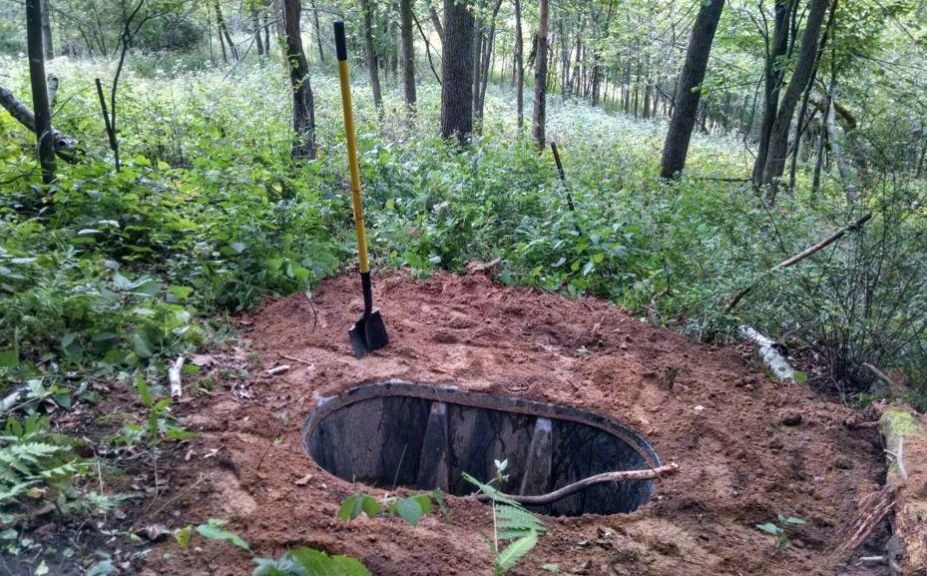
*Have you ever created a whitetail waterhole? You can find the entire strategy of deer waterhole use by checking out, "Deer Waterhole Hunting Strategies".
Mock Rubs For Daytime Movements
What could be better than high quality hunting pinch points created by lines of food, precision mock scrape locations and waterholes? Adding a few mock rubs along the way! It's probably been about 10 years, but John Ozoga is a Nationally recognized deer research biologist who first talked to me about using mock rubs for bucks. John and his fellow researchers used post hole diggers to place cut trunks of various tree species to create rubs and record the frequency of rubbing activity, by tree type. I believe aspen ruled the day back then, but I am not completely sure. But the point was, it was fairly easy to do!
Now, you can even find sources on line for widely preferred cedar species for mock rubbing trees, and guys like John Walton from "Big Rock Trees"are offering rapid growing hybrid tree species that can create great rubbing posts in a single year!
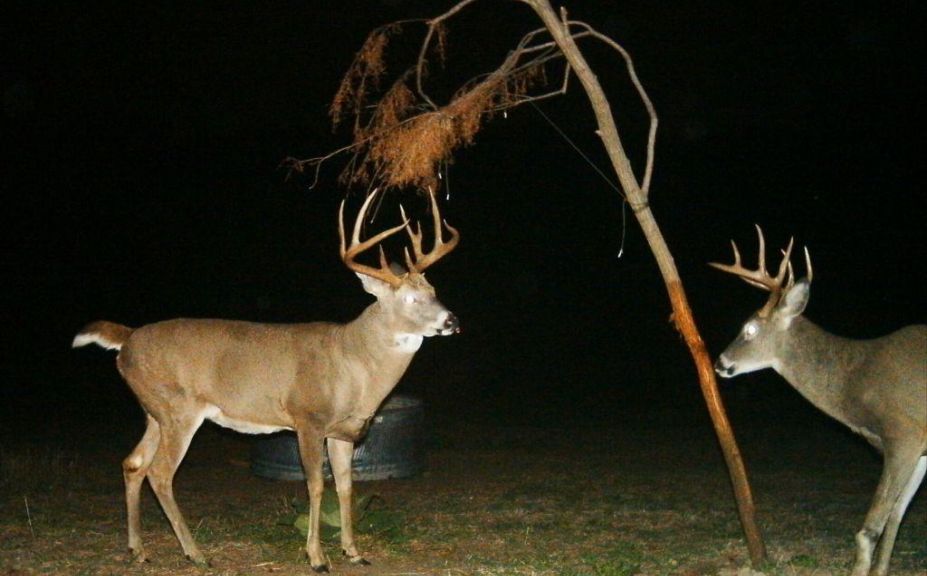
Can you see where this is going? The process of creating daytime buck travel doesn't start with the latest and greatest habitat feature, but instead by combining high quality habitat improvements together, to control precision buck movements within your parcel borders.
Mature Buck Bedding Opportunity = Daytime Buck Movement
Let's face it folks, doe family groups "rule the roost" when it comes to selecting the best food and cover options. In fact, they take over the landscape of high quality food and cover offerings for all but about 2-3 weeks of the year, and that includes high quality daytime bedding opportunity. Creating enough mature buck bedding is a 2-step process:
1. By using significant food sources, you can dictate where doe family groups will bed. Does want to bed as close to their evening food source as possible so by creating adjacent bedding opportunity you can expect to fill those bedding areas with the bulk of the property female portion of the population.
2. By pulling the doe family groups towards food, you can then leave interior locations away from, and within heavy cover, for buck bedding opportunity. Often bucks will bed in these locations whether you improve the bedding areas or not, but it sure helps if you can enhance the opportunity for them to do so!
By making sure that you leave enough room for does and bucks to bed on your land, you can make sure that you address the #1 aspect of controlling daytime buck travel: Mature bucks are actually bedding on your land in the first place!
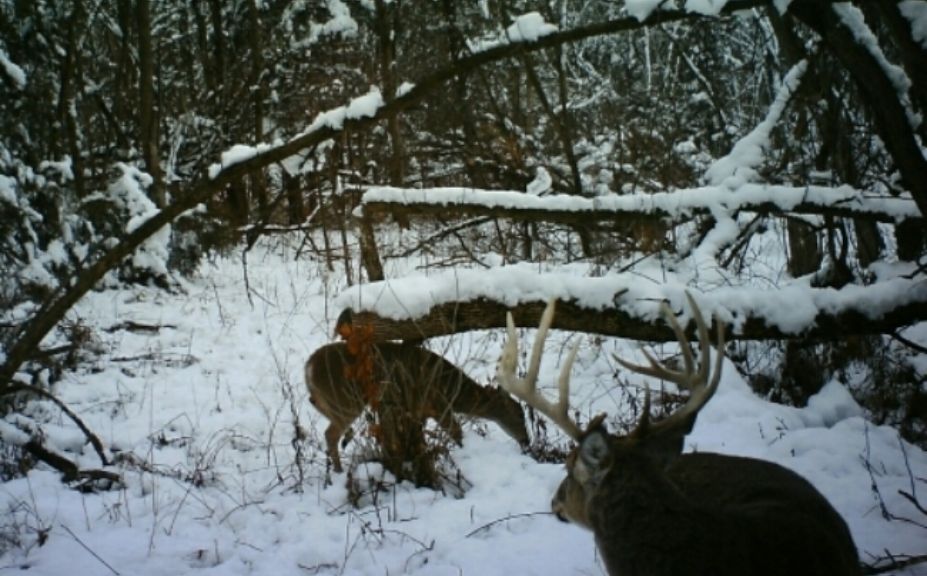
*Want to figure out how to create daytime buck bedding on your land? Than you need to try reading, "Doe and Buck Bedding Areas for Small Parcel Habitat".
Conclusion
When you combine bedding, food, scrapes, rubs and water within a highly defined pattern of lengthy buck travel opportunity you can substantially increase the amount of hours that a buck spends on your land each and every day of the hunting season. But when you place the pieces together there is only one thing that can mess it all up: Hunting pressure. While creating the perfect conditions for daytime buck movement, make sure that the improvements match your hunting access and strategic stand locations so that you can get in and out without spooking deer.
